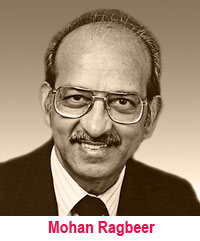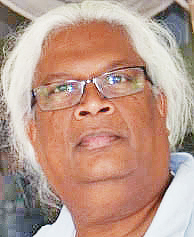Opinions
Kashmir

The history of Jammu & Kashmir (J&K) since 1947 has been marked by the frequency and virulence of Muslim terrorism carried out by trained militants, mainly the Lashkar e Taiba (LeT, formed in 1987 by Osama bin Laden), and Jaiesh e Mohamed (JeM, 2000, created by Pakistan).
They attacked Parliament in Delhi in 2001, people and temples in Srinagar, and a bus and army camp in Kaluchak, near Jammu a few months later, in 2002. Despite Musharraf’s promise to curb and disband them, terrorists continued to infiltrate the state and murder civilians and soldiers.
They attacked Parliament in Delhi in 2001, people and temples in Srinagar, and a bus and army camp in Kaluchak, near Jammu a few months later, in 2002. Despite Musharraf’s promise to curb and disband them, terrorists continued to infiltrate the state and murder civilians and soldiers.
In the last 30 years, there have been over twenty raids in J&K, and other Indian states, each time with many civilian and army victims: Hindus, Sikhs, Muslims, totalling perhaps up to 100,000. Terrorists evicted over 400,000 Hindus from Kashmir valley, now living in crowded refugee camps in Jammu and neighbouring states. On February 14th, 2019 a JeM suicide bomber rammed an army convoy at Pulwama, south of Srinagar, killing 40 soldiers, and injuring twice that.
In response, India last week bombed the Balakot area, where JeM was believed to conduct training, 8 Km inside Pakistan. Al Jazeera later visited and said that the area showed no damage or death that India has claimed. Was this a feint? The Indian bombing had tacit acceptance by major nations and the UN Security Council.
Pakistan wants J&K, or at least Kashmir, but has no historical claim to the area, whose majority Muslims are relatively new to tha area; Hindus and Buddhists have lived there for millennia.
Pakistan claims to want a united home for all Muslims, a claim repeated by most NATO media. This is a facile claim; if genuine, why not take in the 170+millions in all India, and Bangladesh’s 167M, which instead seceded.
Indonesia has the world’s largest Muslim population of 225M; they are many others; will Pakistan agitate to get these under its wing, and kill more Muslims, as it does in J&K? Hardly likely.
The Indian Army has Muslim officers; Kashmiris of all religions previously shared peace before fundamentalist agitation by Pakistan’s government and ISI, its secret service. What did Pakistan do with its Hindu civilian population? It killed or expelled them!
On Oct 22, 1947, Pakistan invaded Kashmir, then independent, at Poonch, using Pashtun tribesmen. When the raiders paused at Baramulla to rape, murder, pillage, and take slaves, while the Pakistani commander reportedly cabled his HQ: "All Sikhs killed. All women raped", the gruesome respite gave Maharaja Hari Singh enough time to complete the articles of accession on Oct 26-7, joining all of his princely state: Jammu, Kashmir, Northern Areas, Ladakh, Trans-Karakoram Tract and Aksai Chin, to the Dominion of India, an act promptly recognised internationally. This allowed India to defend the new state legally.
Meanwhile, Singh’s Sikh and Muslim Gilgit Scouts, under Major William Brown, 25, and his adjutant, Captain Mathieson, both British, had defected to Pakistan, the Muslims having murdered all Sikh comrades, and seized Gilgit; on November 1, 1947 they arrested the Governor and declared a provisional government.
India repulsed the invaders, and would have reclaimed all of Kashmir, had Nehru not yielded to the UN cease-fire plan, despite being warned not to trust Pakistan, as it still occupied Gilgit, Baltistan and the area west of Poonch. The BBC, (https://www.bbc.com/news/10537286) suppressing or ignorant of the facts, reported: “The maharaja… chose India, and a two-year war erupted in 1947”! The accession did not cause the war; the war prompted the accession!
In reporting on the current incident, the CBC’s Mark Gollom posted on Feb 28, “… Kashmir has been claimed by both India and Pakistan since almost immediately after both nations won independence from the U.K. in 1947. The independence war that broke out between India and Pakistan was mainly over Kashmir, and caused the loss of millions of lives…” This is wrong; he has conflated and exaggerated partition casualties with the 1947 British-Muslim coup. This is typical of the misleading reporting on India in NATO media. There was no legal entity called Pakistan before 1947. Nor was there an independence “war”.
J&K is a state in India, one of 29; and should be so styled, not “Indian- controlled or -administered,” as the CBC, CNN, Wikipedia, BBC, al Jazeera and other media do. This usage equates the Pakistan-controlled northern J&K, seized by invasion, with the full-fledged Indian statehood of the entire J&K.
The Pakistan-occupied areas are occupied, not owned, and non-Muslims terrorised into leaving. India is secular, while Pakistan is a theocracy.
In response, India last week bombed the Balakot area, where JeM was believed to conduct training, 8 Km inside Pakistan. Al Jazeera later visited and said that the area showed no damage or death that India has claimed. Was this a feint? The Indian bombing had tacit acceptance by major nations and the UN Security Council.
Pakistan wants J&K, or at least Kashmir, but has no historical claim to the area, whose majority Muslims are relatively new to tha area; Hindus and Buddhists have lived there for millennia.
Pakistan claims to want a united home for all Muslims, a claim repeated by most NATO media. This is a facile claim; if genuine, why not take in the 170+millions in all India, and Bangladesh’s 167M, which instead seceded.
Indonesia has the world’s largest Muslim population of 225M; they are many others; will Pakistan agitate to get these under its wing, and kill more Muslims, as it does in J&K? Hardly likely.
The Indian Army has Muslim officers; Kashmiris of all religions previously shared peace before fundamentalist agitation by Pakistan’s government and ISI, its secret service. What did Pakistan do with its Hindu civilian population? It killed or expelled them!
On Oct 22, 1947, Pakistan invaded Kashmir, then independent, at Poonch, using Pashtun tribesmen. When the raiders paused at Baramulla to rape, murder, pillage, and take slaves, while the Pakistani commander reportedly cabled his HQ: "All Sikhs killed. All women raped", the gruesome respite gave Maharaja Hari Singh enough time to complete the articles of accession on Oct 26-7, joining all of his princely state: Jammu, Kashmir, Northern Areas, Ladakh, Trans-Karakoram Tract and Aksai Chin, to the Dominion of India, an act promptly recognised internationally. This allowed India to defend the new state legally.
Meanwhile, Singh’s Sikh and Muslim Gilgit Scouts, under Major William Brown, 25, and his adjutant, Captain Mathieson, both British, had defected to Pakistan, the Muslims having murdered all Sikh comrades, and seized Gilgit; on November 1, 1947 they arrested the Governor and declared a provisional government.
India repulsed the invaders, and would have reclaimed all of Kashmir, had Nehru not yielded to the UN cease-fire plan, despite being warned not to trust Pakistan, as it still occupied Gilgit, Baltistan and the area west of Poonch. The BBC, (https://www.bbc.com/news/10537286) suppressing or ignorant of the facts, reported: “The maharaja… chose India, and a two-year war erupted in 1947”! The accession did not cause the war; the war prompted the accession!
In reporting on the current incident, the CBC’s Mark Gollom posted on Feb 28, “… Kashmir has been claimed by both India and Pakistan since almost immediately after both nations won independence from the U.K. in 1947. The independence war that broke out between India and Pakistan was mainly over Kashmir, and caused the loss of millions of lives…” This is wrong; he has conflated and exaggerated partition casualties with the 1947 British-Muslim coup. This is typical of the misleading reporting on India in NATO media. There was no legal entity called Pakistan before 1947. Nor was there an independence “war”.
J&K is a state in India, one of 29; and should be so styled, not “Indian- controlled or -administered,” as the CBC, CNN, Wikipedia, BBC, al Jazeera and other media do. This usage equates the Pakistan-controlled northern J&K, seized by invasion, with the full-fledged Indian statehood of the entire J&K.
The Pakistan-occupied areas are occupied, not owned, and non-Muslims terrorised into leaving. India is secular, while Pakistan is a theocracy.
Teacher’s style inspires great
story-telling
 Romeo Kaseram
Romeo Kaseram
Teacher was well into his stride at the front of our elementary school class, his rhetoric of teaching flowing along as a swift current, our attention glued more to the dried guava rod that jumped from hand to hand as with a life of its own. In the present movement of the scenes of daily instruction when I was a boy growing up back home, this time the rod was an instrument for pointing, emphasising, and underscoring white-chalked text on the blackboard. Even at our tender age we were already old hands at knowing from past teaching explorations how lethal this guava rod could become in its shape-shifting incarnations as it descended on
our opened, quivering palms. One moment it was a pointer, its gnarled tip woodpecker tapping tick-tick tock-tock on writing on the chalkboard as a rod of the curriculum; and then, in another iteration, how quickly it transformed, twisting to become a writhing rod of correction. However, in its present incarnation we were thoughtfully guided and being taught fully about exotic creatures inhabiting what was then our mostly-colonised earth; in this case, we were being introduced to animals on the African safari, a few of them crudely illustrated as outlines on the chalkboard. It took some imaginative filling in of the details from our young, developing minds, an additional learning experience in itself, to appreciate the unfolding safari before us.
There grazed ellipticals of elephants, with distorted but rotund mid-sections, with easily-drawn thick, elephantine legs that ended with clubs for toes; the ears were as large as the flaps of tents, and disproportionate trunks arced above tusks inserted as afterthoughts. The zebras were a breeze using white chalk, with the ready-made black background of the chalkboard available as an effortless fill for the requisite stripes.
The predators at the top of the food chain, namely lions in all its pride, prove to be a difficult task for the acquisition of any saleable realism by Teacher. While the manes of the males were easily drawn as a raging brush-fire out of control, the ferocious heads turned out as renderings weighted down with elongated canines, its hind legs too-crooked and disproportionate with the poor creatures’ unwieldy tails.
Later in life I would come to appreciate what ended up on the chalkboard served less as an entry point to a zoological universe and its hierarchies of fauna, and perhaps was more suitable for instruction on what could easily pass as rudimentary sketches by Salvador Dali of a plethora of melting clocks, all suitable for an introductory class to Surrealism 101.
And that Teacher’s attempt at a chalkboard illustration was in fact a happy inadvertence, and could have been a start for me like prehistoric man’s art drawn onto the walls of caves, which, outlined on the map of my early life, served as exploratory paths for my later interest in poststructuralism, postmodernism, and the fine arts.
Meanwhile, the rod of correction was tap, tapping, herding the elephants along and away from the danger of the prowling pride of lions, or substituting with a similar, fatal violence the swinging sting of a zebra’s tail in flattening a clumsy fly that had bumbled onto the chalkboard. So it was we were being taught about a world beyond our shores, where the weak and sick in the herds of wilde-beests, which limping along on fractured, chalk-drawn limbs in a perennial trek to water and sweet, nourishing grass, were being constantly erased by the predatory sweeps of lions baring ferocious caricatures of fangs, even as fiery lightning-strikes from the manes of the males were setting the Serengeti grass ablaze.
So it came to the moment dreaded by the entire class, when Teacher stopped in his tracks and sniffed the air for a victim. By then we were vintage students, knowing the pursuing eyes of Teacher would eventually pounce on one of us in the herd; that the rhetoric contained within his question, “Who would like to tell the class what he has just learned?” was not seeking out a volunteer, but was instead searching for a victim who would be volunteered to stand in front of the class.
This time Teacher sniffed out the fear in the quivering mass of a boy two rows down, whose eyes had noticeably frozen in the bright headlights at the front of the class. “Tell us a story about what you just learned,” Teacher said, tapping the rod of correction in time with each spoken syllable.
Our classmate started out: “One day I took an airplane. It flew and flew and I ended up in Africa.” It was a remarkable start, holding the promise to knit into a compelling tale a sequence of events recalling the entire narrative on the chalkboard.
But then our classmate caught the rod of correction keeping time to the cadence of his words; he faltered, cutting the story short: “The airplane crashed. I came out, and a lion jumped out and ate me up! Crick-crack, story done, lesson done!” he said, anchoring the palms of his hands protectively behind the seat of his pants.
There grazed ellipticals of elephants, with distorted but rotund mid-sections, with easily-drawn thick, elephantine legs that ended with clubs for toes; the ears were as large as the flaps of tents, and disproportionate trunks arced above tusks inserted as afterthoughts. The zebras were a breeze using white chalk, with the ready-made black background of the chalkboard available as an effortless fill for the requisite stripes.
The predators at the top of the food chain, namely lions in all its pride, prove to be a difficult task for the acquisition of any saleable realism by Teacher. While the manes of the males were easily drawn as a raging brush-fire out of control, the ferocious heads turned out as renderings weighted down with elongated canines, its hind legs too-crooked and disproportionate with the poor creatures’ unwieldy tails.
Later in life I would come to appreciate what ended up on the chalkboard served less as an entry point to a zoological universe and its hierarchies of fauna, and perhaps was more suitable for instruction on what could easily pass as rudimentary sketches by Salvador Dali of a plethora of melting clocks, all suitable for an introductory class to Surrealism 101.
And that Teacher’s attempt at a chalkboard illustration was in fact a happy inadvertence, and could have been a start for me like prehistoric man’s art drawn onto the walls of caves, which, outlined on the map of my early life, served as exploratory paths for my later interest in poststructuralism, postmodernism, and the fine arts.
Meanwhile, the rod of correction was tap, tapping, herding the elephants along and away from the danger of the prowling pride of lions, or substituting with a similar, fatal violence the swinging sting of a zebra’s tail in flattening a clumsy fly that had bumbled onto the chalkboard. So it was we were being taught about a world beyond our shores, where the weak and sick in the herds of wilde-beests, which limping along on fractured, chalk-drawn limbs in a perennial trek to water and sweet, nourishing grass, were being constantly erased by the predatory sweeps of lions baring ferocious caricatures of fangs, even as fiery lightning-strikes from the manes of the males were setting the Serengeti grass ablaze.
So it came to the moment dreaded by the entire class, when Teacher stopped in his tracks and sniffed the air for a victim. By then we were vintage students, knowing the pursuing eyes of Teacher would eventually pounce on one of us in the herd; that the rhetoric contained within his question, “Who would like to tell the class what he has just learned?” was not seeking out a volunteer, but was instead searching for a victim who would be volunteered to stand in front of the class.
This time Teacher sniffed out the fear in the quivering mass of a boy two rows down, whose eyes had noticeably frozen in the bright headlights at the front of the class. “Tell us a story about what you just learned,” Teacher said, tapping the rod of correction in time with each spoken syllable.
Our classmate started out: “One day I took an airplane. It flew and flew and I ended up in Africa.” It was a remarkable start, holding the promise to knit into a compelling tale a sequence of events recalling the entire narrative on the chalkboard.
But then our classmate caught the rod of correction keeping time to the cadence of his words; he faltered, cutting the story short: “The airplane crashed. I came out, and a lion jumped out and ate me up! Crick-crack, story done, lesson done!” he said, anchoring the palms of his hands protectively behind the seat of his pants.
